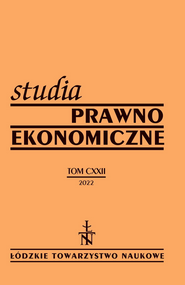Własność zagraniczna a efektywność przedsiębiorstw w Polsce
Foreign ownership versus enterprise effectiveness in Poland
Author(s): Alina Szewc-Rogalska, Marek WąsaczSubject(s): Economy, Business Economy / Management
Published by: Łódzkie Towarzystwo Naukowe
Keywords: foreign capital; enterprise finance; profitability; work efficiency; tax levels
Summary/Abstract: Background: This paper deals with the impact of ownership structures featuring foreign investors on the effectiveness of enterprises in Poland. The above is particularly relevant given the increasing importance of foreign capital to Polish economy. Despite sizeable academic achievement in the area, many topics remained underexplored and existing study results are becoming obsolete due to constant changes in the legal and economic environment. Research purpose: The goal of this paper is to analyze the relationship between foreign ownership and the effectiveness of enterprises in Poland in years 2012–2019. Four research hypotheses were verified in the study.Methods: The study used aggregated data from 8.9 thousand foreign- and 41.2 thousand Polish- owned enterprises, employing 10 and more people. Three research methods were used: (i) measurement of the scale of foreign ownership in Poland’s enterprise sector (4 indicators); (ii) measurement of the average size of foreign- and Polish-owned enterprises (3 indicators); (iii) measurement and comparative analysis of the effectiveness of foreign versus Polish-owned enterprises (11 indicators).Conclusions: There is a systematic growth in foreign ownership in Poland’s enterprise sector, with the largest increases being in number of employees and revenue size. Foreign-owned enterprises were found to have achieved decisively better effectiveness in human-resource management compared to Polish-owned enterprises; in the longer term, however, there was a tendency for this advantage to shrink. Foreign-owned enterprises showed a clear and distinct advantage over Polish-owned enterprises in respect of their capacity for generating high returns on capital invested by the owners. Significantly, that advantage was not a direct consequence of the profitability level of asset sales and rotations. Its main source was the use by foreignowned enterprises – to a greater extent that Polish enterprises – of foreign capital to finance their operations. Foreign-owned enterprises – despite their greater potential and higher effectiveness across multiple aspects of business – achieved an above-zero financial result far less frequently than Polish-owned enterprises did. The indicators used in the assessment of effective tax levels were on a close level at the beginning of the studied period, to achieve a higher level in foreignowned enterprises starting from 2017. The differences arose not only from the elimination of loopholes in the tax system but also from different CIT rates for enterprises with different revenue levels (mainly for Polish-owned enterprises).
Journal: Studia Prawno-Ekonomiczne
- Issue Year: 2022
- Issue No: 125
- Page Range: 161-182
- Page Count: 22
- Language: English, Polish

